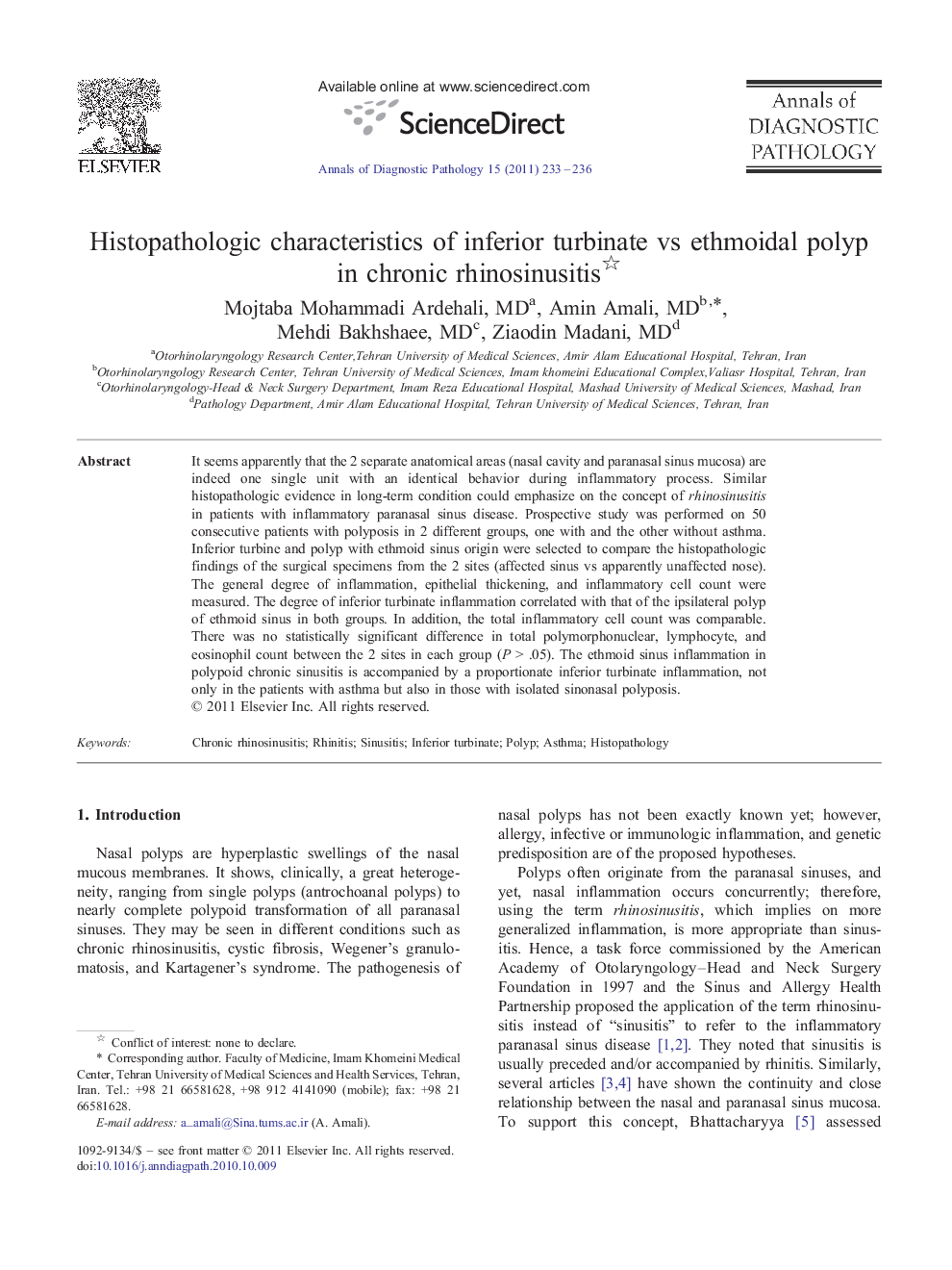| Article ID | Journal | Published Year | Pages | File Type |
|---|---|---|---|---|
| 4130176 | Annals of Diagnostic Pathology | 2011 | 4 Pages |
It seems apparently that the 2 separate anatomical areas (nasal cavity and paranasal sinus mucosa) are indeed one single unit with an identical behavior during inflammatory process. Similar histopathologic evidence in long-term condition could emphasize on the concept of rhinosinusitis in patients with inflammatory paranasal sinus disease. Prospective study was performed on 50 consecutive patients with polyposis in 2 different groups, one with and the other without asthma. Inferior turbine and polyp with ethmoid sinus origin were selected to compare the histopathologic findings of the surgical specimens from the 2 sites (affected sinus vs apparently unaffected nose). The general degree of inflammation, epithelial thickening, and inflammatory cell count were measured. The degree of inferior turbinate inflammation correlated with that of the ipsilateral polyp of ethmoid sinus in both groups. In addition, the total inflammatory cell count was comparable. There was no statistically significant difference in total polymorphonuclear, lymphocyte, and eosinophil count between the 2 sites in each group (P > .05). The ethmoid sinus inflammation in polypoid chronic sinusitis is accompanied by a proportionate inferior turbinate inflammation, not only in the patients with asthma but also in those with isolated sinonasal polyposis.
